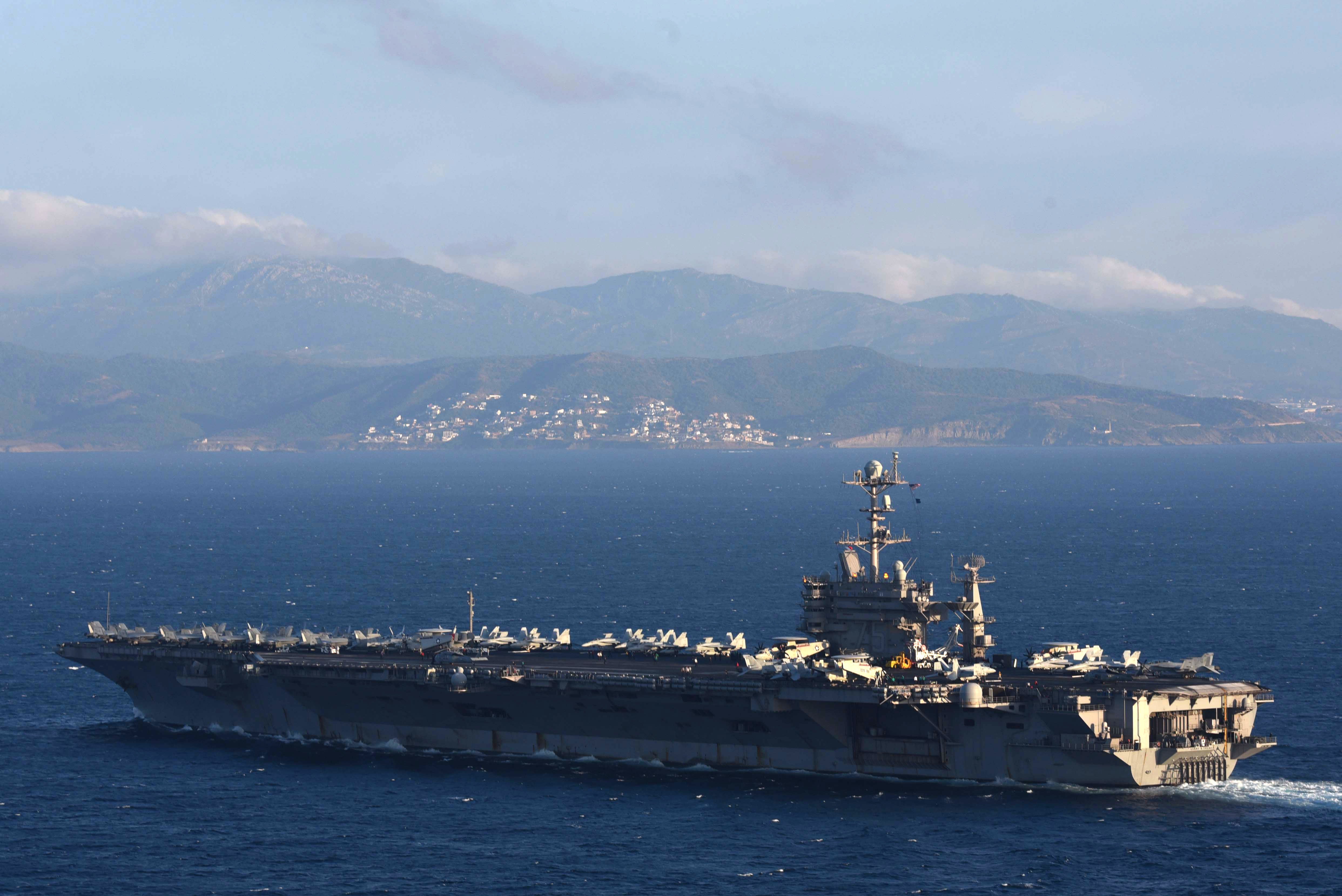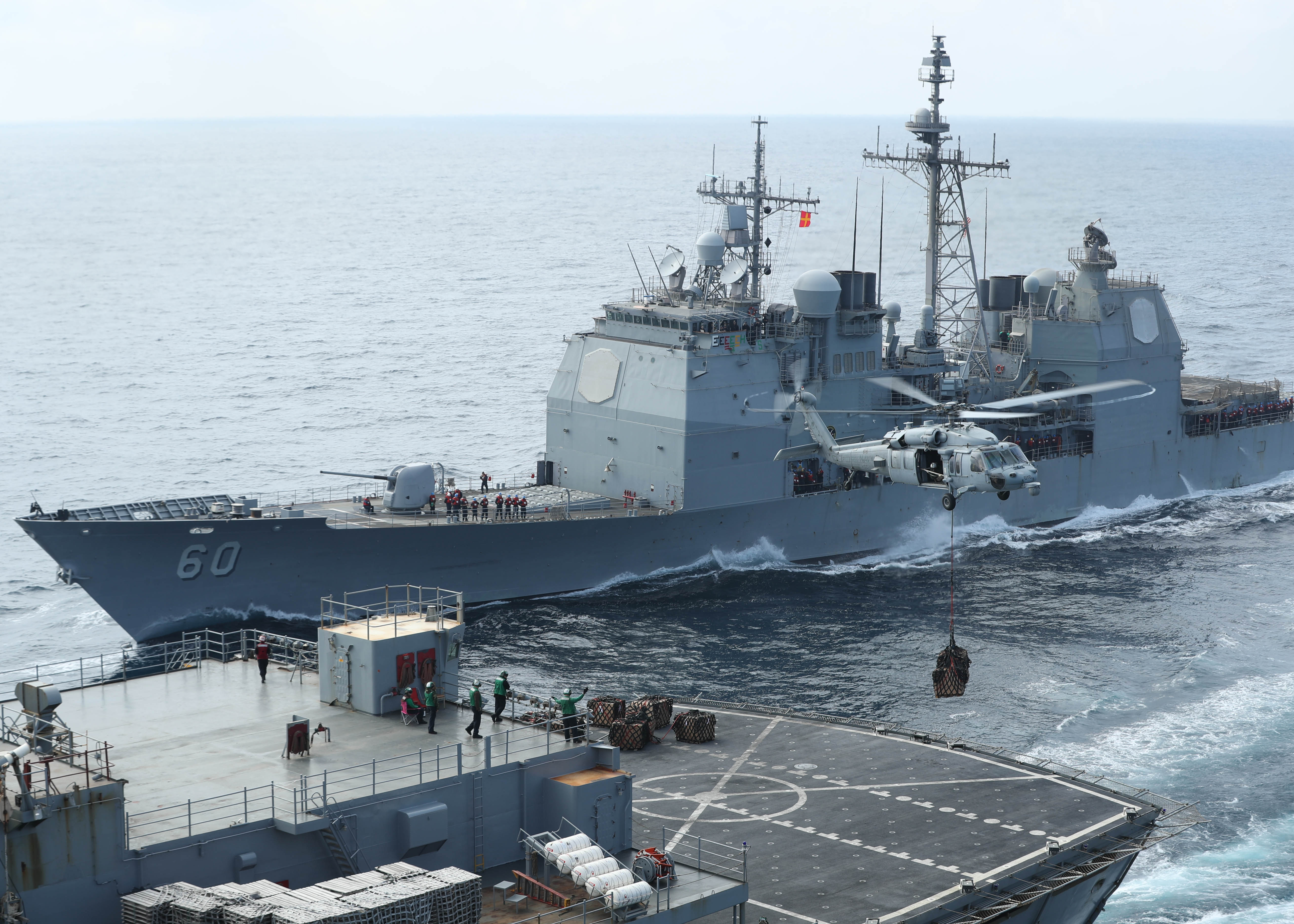
USS Harry S. Truman (CVN-75) and three escorts assigned to Carrier Strike Group 8 are scheduled to return to Naval Station Norfolk, Va. on Saturday, following a brief three-month deployment to the Mediterranean and Atlantic.
Truman, Carrier Air Wing 1, guided-missile cruiser USS Normandy (CG-60), and guided-missile destroyers USS Arleigh Burke (DDG-51) and USS Forrest Sherman (DDG-98) are expected back in Norfolk this weekend, according to U.S. Fleet Forces Command
Since the deployment was shorter than what’s become the typical length at sea for a CSG, the Navy is keeping the returning units available to return to sea as needed, according to a Wednesday statement.
“All returning units are 100 percent mission capable and will remain in the sustainment phase of the Optimized Fleet Response Plan, which means they will sustain warfighting readiness and be ready to surge forward or redeploy when called upon,” according to a statement released by Adm. Christopher Grady, the commander of U.S. Fleet Forces Command.

When the Truman CSG deployed on April 11, the Navy announced the plan was to conduct a variety of missions including precision strikes against ISIS targets in Iraq and Syria and exercises with NATO allies.
Truman Strike Group embarked with an extensive escort fleet. Along with Normandy, Arleigh Burke and Forrest Sherman, the CSG also included guided-missile destroyers USS Farragut (DDG-99), USS Bulkeley (DDG-84), USS Jason Dunham (DDG-109), USS The Sullivans (DGG-68) and the German Navy guided-missile frigate FGS Hessen (F221). Jason Dunham and The Sullivans deploy after the bulk of the CSG arrived in theater. The Navy did not disclose missions performed by the ships remaining at sea.
Citing the National Defense Strategy, Grady’s statement explains Truman’s short deployment is intended to make Navy operations unpredictable, while also showcasing the fleet’s “inherent maneuverability and flexibility.” The Truman Strike Group was the first East Coast CSG that did not operate in the Red Sea or the Persian Gulf on deployment for more than a decade.
The squadrons of CVW-1 are returning to bases at Naval Air Station (NAS) Oceana, NAS Whidbey Island, NAS Jacksonville, NAS Lemoore and NS Norfolk. CVW-1 includes: Strike Fighter Squadron (VFA) 11 “Red Rippers”; VFA-le “Checkmates”; VFA-8 “Sunliners”; VFA-l36 “Knighthawks”; Electronic Attack Squadron (VAQ) 137 “Rooks”; Early Warning Squadron (VAW) 126 “Seahawks”; Helicopter Maritime Strike Squadron (HSM) 72 “Proud Warriors”; Helicopter Sea Combat Squadron (HSC) 11 “Dragon Slayers”; and a detachment from Fleet Logistics Support Squadron (V RC) 40 “Rawhides.”





